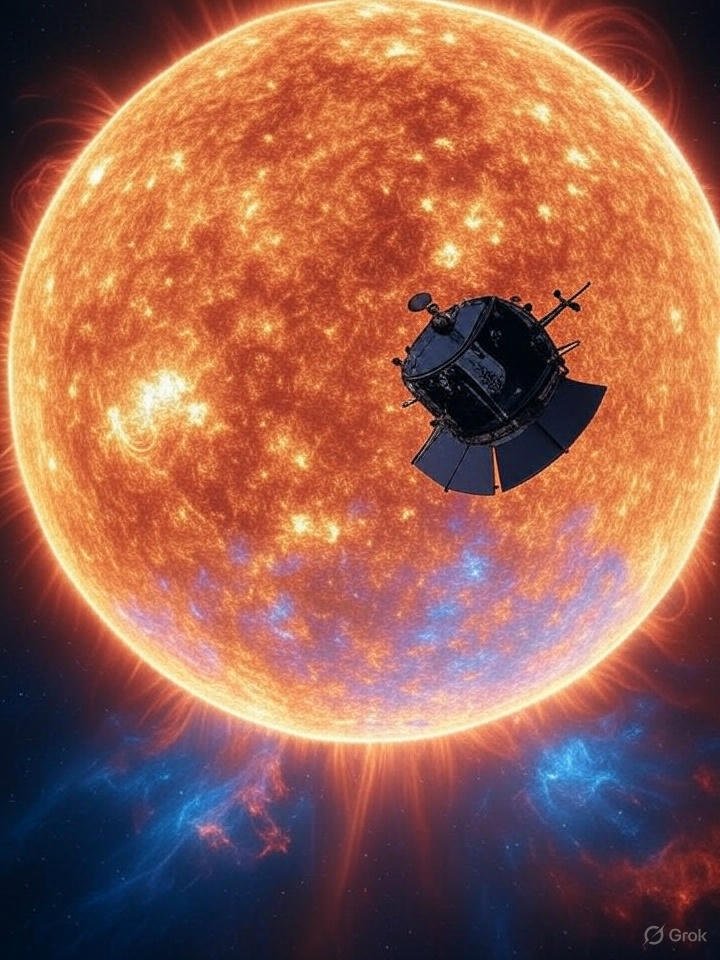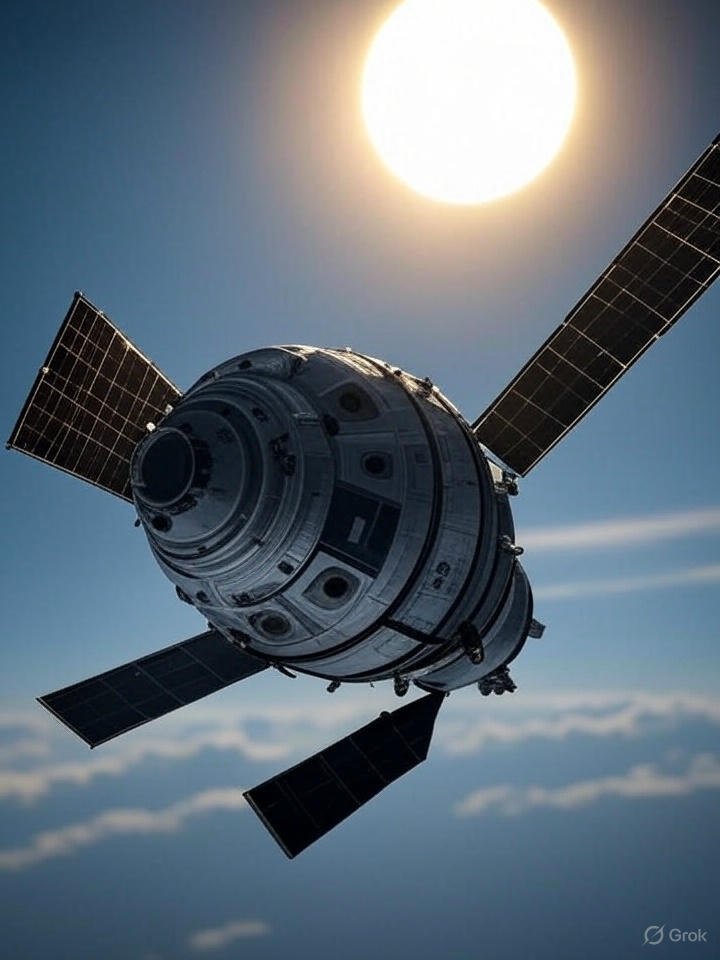When Humanity Touched the Sun
The concept of the Sun as unreachable or untouchable has been a common theme in history, that theme was laid to rest on April 28, 2021 when a Spacecraft from NASA allegedly “touched the Sun”
NASA's Parker Solar Probe is the spacecraft that touched the Sun. On April 28, 2021, it became the first human-made object to enter the Sun's outer atmosphere, known as the corona, crossing the Alfvén critical surface at approximately 18.8 solar radii (about 8.1 million miles or 13 million kilometers from the Sun's surface). This event was described by NASA as "touching the Sun," the event marked a historic milestone in solar science. The probe spent about five hours in the corona, sampling particles and magnetic fields to provide unprecedented and formerly unknown data about the Sun's atmosphere.

CREATION OF THR SOLAR PROBE
The Parker Solar Probe, built by NASA and Johns Hopkins APL, was first conceived in 2008 as was known as Solar Probe Plus back then. It was reenamed in 2017 to honor Eugene Parker. It Launched on August 12, 2018, on a Delta IV Heavy, it was designed to study the Sun’s corona, surviving temperatures up to 2,500°F (1,377°C) with a 4.5-inch carbon-composite heat shield and water-cooled solar panels. Costing $1.5 billion, it used Venus gravity as assistance to approach within 3.8 million miles of the Sun, reaching speeds of 430,000 mph, the fastest ever reached by a Spacecraft.. Four instrument suites measure magnetic fields, plasma, and particles. It first entered the corona on April 28, 2021, with its closest pass on December 24, 2024. Its mission still continues till today, with orbits planned for March and June 2025.

DISCOVERIES
The Parker Solar Probe, launched by NASA on August 12, 2018, has made groundbreaking discoveries about the Sun by venturing closer to it than any spacecraft that existed before it, entering the Sun’s corona and reaching as close as 3.8 million miles (6.1 million km) from the solar surface.
Corona Entry: On April 28, 2021, the probe became the first spacecraft to cross the Alfvén critical surface, entering the Sun’s outer atmosphere (corona) at ~18.8 solar radii. It spent ~5 hours sampling particles and magnetic fields, confirming the corona’s dynamic boundary is wrinkled with spikes and valleys, and not as smooth as previously thought.
Solar Wind Switchbacks: The probe discovered switchbacks, zigzag-shaped kinks in the solar wind’s magnetic fields, originating from the Sun’s photosphere. These structures, enriched with helium, are linked to magnetic reconnection and help explain how solar wind is accelerated.

Coronal Heating Mystery: Data revealed insights into why the corona reaches 1 million°C while the surface (photosphere) is just 6,000°C. Measurements suggest magnetic waves and turbulence in the corona are the reason for such extreme temperature.
Coronal Mass Ejections (CMEs): In 2024, the probe observed a Kelvin-Helmholtz instability during a CME, a first in solar observations, showing how solar eruptions interact with the solar winds and alter Space weather.
Sungrazing Comets: One of the probe’s Instrument, WISPR discovered 20 sungrazing comets, including PSP-001, providing new data on comet behavior near the Sun.
Solar Wind Origins: The probe confirmed that solar wind streams are shaped by magnetic fields and plasma flows from the Sun’s surface, refining models of space weather affecting Earth.

The probe will continue orbiting the Sun, with planned close approaches on March 22, 2025, and June 19, 2025. It is expected to descend even deeper into the corona until its final orbit in 2025, though its thrusters will eventually run out of fuel, limiting its ability to maintain orientation.This mission has revolutionized our understanding of the Sun, providing direct measurements of the corona’s magnetic fields, plasma, and solar wind, which are critical for studying space weather and its impacts on Earth.

